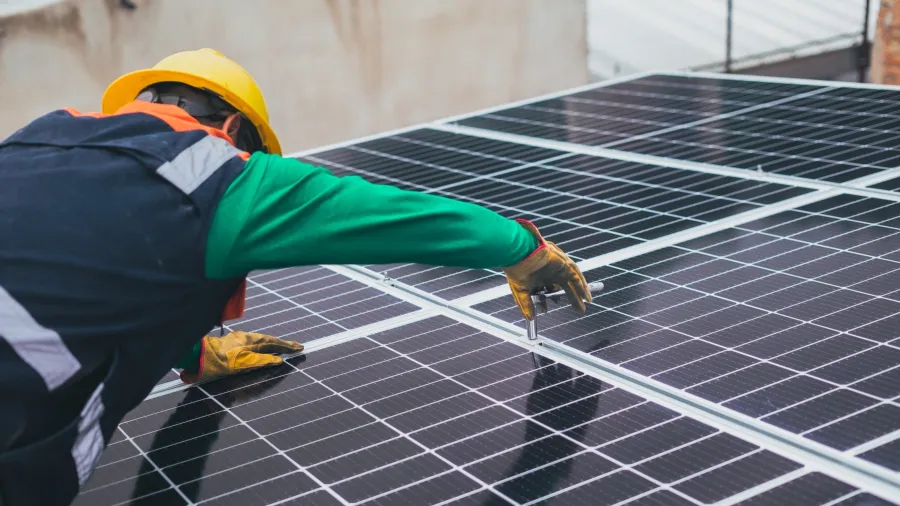
The Philippines is poised to lead Southeast Asia in sustainability
It could 'leapfrog' to be a regional leader with renewables projected to be worth $30b by 2030.
Southeast Asia could find a new leader in the Philippines in sustainability, should it reap its renewables’ potential projected to grow into a $30b market by 2030, Bain & Co. reported.
Bain & Co’s Perspective on the Green Economy report, conducted with Microsoft and Temasek, noted that of this projected renewable market, around 35% will be solar power. This could pave the way for investors to build infrastructures, such as electric grids and photovoltaic (PV) recycling plants.
The Philippines could also rise as a wind energy powerhouse with a 160-gigawatt (GW) wind energy potential in offshore areas within 200 km of its shores, making it one of only eight emerging markets across the globe. On top of this, it is also an ideal destination as global wind technologies can easily be adapted in the Philippines, considering it has no technological transfer limitations.
The Philippine government has yet to join Southeast Asian countries, like Indonesia and Laos, that have committed to net zero. Despite this, the Philippines has set a 2030 target to reduce its carbon emissions by 75%. It has also planned to raise the total installed renewable capacity to 38% by 2035.
Further, into its clean energy plans, the government declared in November 2020 a moratorium on new coal-fired power plant projects. This is followed by reports that the Philippines spent approximately $64b (P318b) in green projects, whilst its central bank invested some $550m in sustainable bonds.
Phasing out coal
Currently, the Philippines is pushing to reduce emissions by phasing out coal and attracting green financing, Bain and Co’s report read in part. It added that in line with the government’s commitment, private firms have also taken part by being signatories to Science Based Targets Initiatives or setting their own net-zero or carbon-neutrality targets.
The moratorium will result in the suspension of about 8 GWs of pre-permitted coal projects, the majority of which are expected to come online by 2026, according to Fitch Solutions, citing government sources.
Meanwhile, the coal projects that have been able to comply with environmental requirements will still be allowed to proceed. Nearly 20-GW coal-fired capacity were in pre-completion stages as of end-2020, which is around 39% of the total capacity in the pipeline.
Also emphasising that coal is still the cheaper and more reliable option to meet the Philippines’ demand surge, Fitch predicts that coal will still dominate the energy mix in the country, reaching 59% by 2029.
“We now forecast coal-fired power generation to increase by an annual average of 5.2% between 2020 and 2029, amounting to approximately 93.6terawatt-hour by 2029,” it said. Fitch, however, said that its forecasts are subjected to “significant downside risks” as coal projects are being opposed by the public. It also noted that key utilities in the country, such as AC Energy and Meralco, have intended to shift from coal.
By 2033, based on Rystad Energy Research, coal capacity in the Philippines is expected to have reached its peak and will be set to decline. Coal’s share in the country’s power capacity mix will likely drop to approximately 35% by 2030 and further down to 13% by 2050.
“The decline in baseload coal generation will need significant compensating capacity from solar and wind sources,” Rystad Energy Senior Analyst Harshid Shridhar said.
Shridhar backed the report’s findings that the Philippines could lead the region with the appropriate financing and technology transfer terms as it set “ambitious” targets in PV module recycling and wind turbine recycling. He added that the emphasis on green energy sources could benefit businesses, as well as manufacturing entities through incentives, such as the imposition of a reduced carbon tax.
According to a separate report by the Economic Research Institute for ASEAN and East Asia, coal generation could peak at 56% by 2030 despite the moratorium, due to power plan project developments that have already been approved.
“Whilst the coal moratorium has been widely lauded by anti-coal groups and climate change advocates, its effects will not be instantaneously felt,” Asia Clean Energy Partners Research Associate Ralph Justice Apita claimed.
“But with increasing public pressure, continued downward trend in the cost of renewable energy technologies, likely ADB financing for coal power plant retirements, and full foreign ownership of geothermal exploration in the Philippines, continued construction of even the greenlit plants will come under pressure, and the share of coal generation in the country’s power mix will decline.”
Attaining ambitious targets
“For the country to achieve its ambitious sustainability targets, they will need to start with effective government leadership in establishing a research body like the Philippine Energy Research and Policy Institute, and soliciting ground-level opinions from think tanks, to complement existing and upcoming policies with a scientific and evidence-based approach for a well-thought-out public policy,” Apita said. He added the government should follow through with stricter implementation and constant monitoring. New administrations should also opt to recommit to these programmes to ensure continuity, instead of focusing on “less effective populist programmes.”
Moreover, the Philippines could also invest more in its grid capabilities as well as address challenges in giving far-flung areas access to electricity, as recommended by Black & Veatch’s executive vice president and managing director, Asia Power Business, Narsingh Chaudhary, and associate vice president for management consulting business in Asia, Harry Harji.
The Philippines will require increased grid flexibility and management capabilities to respond to sudden fluctuations in supply caused by changes in weather and time of day.
One way to approach this is by developing distributed energy resources (DER), such as solar and battery energy storage systems, Chaudhary and Harji said. These could also include wind, microgrids, combined heat and power systems, backup generators, as well as technologies that enhance demand response offerings.
“These solutions are often installed behind the meter and funded by utilities, capital markets, or customers themselves,” Chaudhary and Harji said.
Addressing rural electrification issues, which is prominent in the Philippines as an archipelagic state, will also be critical as this will create opportunities for distributed power generation. For instance, microgrids can provide the power reliability that remote locations need whilst ensuring the facilities are commercially viable.
In addition, Black & Veatch said renewable energy can be paired with energy storage to enhance grid resilience. It can also be integrated into grid balancing solutions to balance generation variability whilst meeting decarbonisation targets. DER can also boost energy resilience by functioning as independent nodes to support interconnected power and grid solutions distributed across traditional networks.
“Whilst nations, like the Philippines, build their sustainable energy portfolios, they will also need to review their opportunities to transition away from coal,” Chaudhary and Harji said.
Black & Veatch noted coal plant owners may also consider the long-term economic viability of their facilities which have several alternatives, such as a full or partial fuel conversion to fuel sources like natural gas, biomass or hydrogen, retrofitting emissions control equipment or adopting carbon capture, use and storage solutions, and decommissioning aged coal assets for repurposing or repowering.



















 Advertise
Advertise






